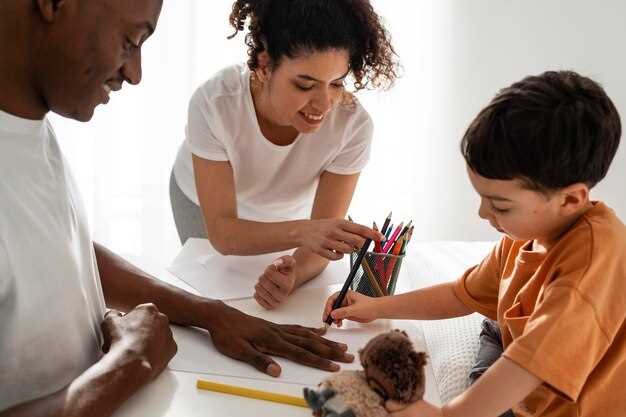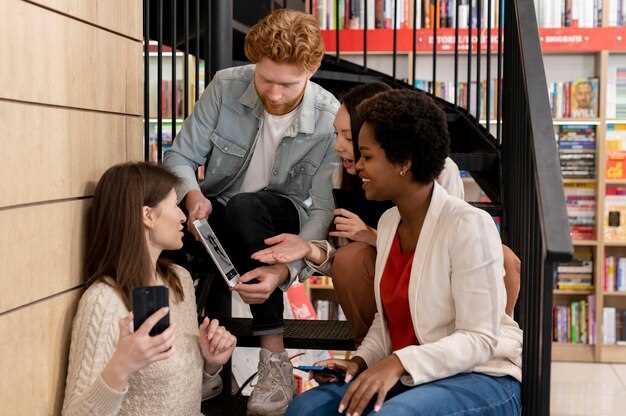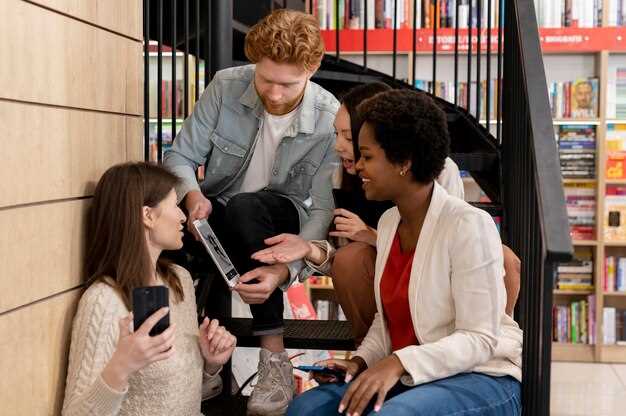In today’s interconnected world, classrooms are a melting pot of cultures and backgrounds. Educators face the exciting challenge of engaging students from various walks of life. Understanding the rich tapestry of experiences each individual brings is essential. This is not simply about teaching; it’s about connection, understanding, and growth. Recognizing and valuing diversity enhances the learning atmosphere tremendously.
Creating a supportive environment is crucial for all learners. Each student’s unique perspective can strengthen classroom dynamics. It’s important to appreciate their individual histories. This leads to greater engagement and emotional investment in the learning process. Teachers must explore innovative ways to bridge cultural gaps.
A holistic approach can transform traditional methods. By integrating diverse perspectives into the curriculum, educators encourage collaboration among students. They can experience the joy of learning from one another. Additionally, fostering open dialogue can break down barriers. When students feel their voices are heard, there is a palpable shift in energy.
Encouraging empathy and respect among peers lays the groundwork for meaningful interactions. Simple adjustments in teaching can have profound impacts. Adapting materials to reflect varied backgrounds not only enriches lessons but also validates students’ identities. The aim is to cultivate a learning atmosphere filled with mutual respect and genuine curiosity about one another.
Ultimately, the goal is to nurture an inviting space for everyone. A classroom where every student feels valued is not just beneficial; it is essential. In such an environment, imagination flourishes, and relationships deepen. Every teacher has a remarkable opportunity to shape students’ perceptions of each other. This can lead to brighter futures fueled by understanding and cooperation.
Inclusive Education: Strategies for Culturally Responsive Classrooms

Creating an environment where every individual feels valued is essential. Diversity enriches learning experiences. Different backgrounds contribute unique perspectives. Recognizing and embracing these differences fosters a supportive atmosphere. This approach enhances overall comprehension and encourages collaboration.
Teachers play a pivotal role in this transformative process. By integrating varied cultural contexts into their lessons, they can engage students on multiple levels. For instance, incorporating literature from diverse authors not only broadens students’ horizons but also strengthens their connection to the material. Moreover, adopting flexible teaching methods allows educators to address varied learning styles, ensuring that no student feels alienated.
Building strong relationships is another cornerstone of this philosophy. Understanding and respecting students’ identities is crucial. This can be achieved through consistent and open communication. Whether it’s through one-on-one discussions or group activities, connecting with students fosters trust and enhances engagement.
Furthermore, involving families in the educational process creates a community around learning. When families are engaged, students feel supported. Regular communication with parents about their children’s progress is vital. Schools can organize cultural events that celebrate diversity and promote understanding among all community members. Such activities not only honor different traditions but also promote unity.
Assessments should also reflect a nuanced understanding of students’ varied backgrounds. Innovative evaluation methods can measure learning beyond traditional tests. Project-based learning and collaborative assignments encourage teamwork and creativity. Educators should strive to create benchmarks that acknowledge diverse accomplishments.
In summary, implementing an approach that values every voice leads to richer educational experiences. Ultimately, understanding and celebrating what makes each student unique creates a thriving and vibrant learning community.
Understanding Cultural Competency in Education

Cultural proficiency encompasses a range of skills essential for effective interaction amidst diverse backgrounds. It’s about acknowledging differences and appreciating unique perspectives. This concept goes beyond mere tolerance; it encourages deeper engagement. Building meaningful connections can empower both educators and learners. The ability to navigate cultural nuances is crucial in today’s varied environment.
Educators need to foster an awareness of their own cultural contexts while also recognizing those of their students. Engaging in self-reflection helps identify biases that might influence teaching methods. This awareness not only enriches the educational experience but also builds trust. In a setting where every individual feels heard and respected, collaborative relationships flourish.
Furthermore, integrating diverse materials and perspectives into the curriculum broadens understanding. Including literature, history, and examples from various cultures enhances learning. It opens conversations that might otherwise remain closed. When students see themselves reflected in their studies, it can ignite a passion for learning.
Understanding cultural sensitivity is an ongoing journey. It requires commitment and an openness to growth. No single workshop or training can encapsulate the complexities involved. Engaging with communities, listening to personal stories, and being flexible in approach can all foster deeper insights. Ultimately, cultivating this proficiency enriches the educational landscape and benefits everyone involved.
Defining Cultural Competency
Cultural competency is essential in navigating our diverse society. It encompasses the ability to understand, communicate, and interact effectively with individuals from various backgrounds. This skill goes beyond mere awareness; it demands ongoing reflection and growth. Developing such competency is a journey, one that requires patience and openness to new perspectives.
At its core, this concept involves recognizing and valuing differences. It requires individuals to engage in meaningful dialogues about identity, beliefs, and experiences. By doing so, we cultivate an environment that honors diverse voices. This not only promotes respect but also encourages collaboration among different communities.
The process often involves learning about various cultural norms and practices. Understanding someone’s background can lead to better relationships and reduced conflicts. It’s as much about listening as it is about sharing one’s own narrative. Through this exchange, trust and empathy flourish.
Moreover, developing this competency can significantly impact professional environments. When individuals are equipped to respond to cultural nuances, they can better serve their colleagues and clients. This is particularly important in settings where diverse populations intersect, as it allows for more tailored and effective communication.
| Key Elements | Description |
|---|---|
| Awareness | Recognizing one’s own cultural biases and assumptions. |
| Knowledge | Understanding different cultural practices and beliefs. |
| Skills | Ability to communicate effectively and respectfully across cultures. |
| Attitude | Openness to learning and embracing differences. |
Ultimately, cultural competency is a vital asset in fostering understanding and harmony. As we strive to enhance our abilities in this area, we contribute to creating more equitable spaces where everyone feels valued. It is not just a personal journey; it is a collective mission that impacts communities at large.
The Importance of Cultural Awareness
Understanding diverse backgrounds fosters connection and empathy. It enriches interactions between individuals from various communities. Awareness of cultural differences can lead to deeper insights. Ultimately, it transforms the way we communicate. When we recognize and appreciate each other’s traditions, it creates unity.
Empathy grows when individuals know their peers’ experiences. This understanding encourages an environment where everyone feels valued. Such connections help diminish biases and stereotypes. They promote mutual respect. Positive relationships flourish in an atmosphere of trust.
Moreover, a deep appreciation of diversity enhances learning experiences. By acknowledging varying perspectives, everyone benefits from richer discussions and innovative ideas. Every student brings unique viewpoints that can challenge conventional thinking. Consequently, this diversity drives creativity, leading to more effective problem-solving.
Creating spaces where individuals can express their identities is crucial. It allows everyone to participate fully, contributing their own stories and experiences. Feeling seen and heard instills confidence in individuals. When students know their backgrounds are acknowledged, they are more likely to engage actively.
The ripple effect of promoting cultural awareness extends beyond the classroom. Students carry these values into their communities. This cultivation of respect and understanding can challenge societal norms and encourage broader change. Embracing differences fosters a more harmonious society where diversity is celebrated, not merely tolerated.
Building Relationships with Diverse Families
Establishing connections with families from various backgrounds is vital in any learning environment. It involves understanding their unique experiences and perspectives. Fostering these relationships enriches the educational experience for everyone. Communication is key. Listening attentively can open doors to meaningful dialogue. When families feel valued, they become more engaged.
This engagement fosters a sense of belonging. It can lead to collaboration that benefits students. Educators should reach out to families proactively. Simple gestures matter; a phone call or a welcoming email can make a difference. Hosting informal gatherings allows families to interact comfortably. It builds trust and rapport.
- Create opportunities for families to share their traditions and stories.
- Provide translation services to bridge language gaps.
- Use various communication methods like newsletters, text messages, and social media.
- Encourage families to participate in classroom activities and events.
By facilitating these interactions, educators not only create a supportive community but also gain valuable insights into the needs and aspirations of their students. Moreover, these relationships enhance the academic and social development of learners, ultimately benefiting the entire school environment.
Building these bonds requires effort and patience. It’s essential to see families as partners in the journey. Encourage open dialogue about the challenges they face. Celebrate successes together. When families and schools unify their efforts, the potential for student achievement grows exponentially.
Assessing Teacher Knowledge and Skills
Evaluating the competencies of educators is crucial for fostering an effective environment. Understanding their strengths, as well as areas needing improvement, allows for tailored professional development. Knowledge assessment can take many forms. Surveys, observations, and self-reflections are commonly used methods. Each approach provides valuable insights into teacher capabilities.
Direct feedback from peers and supervisors also plays a significant role in this process. Analyzing teaching practices leads to more informed decisions. When teachers engage in collaborative assessments, they gain different perspectives on their methods. This not only enhances their skillset but also promotes a culture of continuous improvement. Comprehensive evaluation goes beyond just checking off skills; it encompasses understanding the diverse needs of all students.
Moreover, integrating student feedback provides a unique angle for assessment. Listening to learners can highlight the effectiveness of instructional strategies. This creates a fuller picture of a teacher’s impact in the learning space. Incorporating technology can further streamline assessments, making them more efficient. The goal is to create a well-rounded profile that showcases both knowledge and practical skill.
Ultimately, a multifaceted approach is essential to understanding educator effectiveness. Continuous reflection and open communication foster an environment of growth. When teachers are well-supported, they are more likely to adapt their techniques. This not only influences their professional journey but greatly enhances student experiences. Emphasizing evaluation of knowledge and skills ensures the entire teaching community progresses forward.
Creating Inclusive Learning Environments

Establishing spaces where every individual feels valued is crucial. Students come from diverse backgrounds, each carrying unique experiences. Recognizing these differences fosters a sense of belonging. It’s all about building connections and understanding.
To achieve this, consider the following points:
- Promote open communication among learners.
- Encourage collaboration through group activities.
- Respect and celebrate cultural diversity.
- Utilize varied instructional methods to meet different needs.
When instructors actively incorporate multiple perspectives, they enrich the learning experience for everyone involved, allowing each student’s strengths to shine while simultaneously addressing their challenges.
Creating a sense of community is essential. Establish norms that embrace differences. Foster interactions that promote empathy and understanding. Activities should reflect students’ cultural heritages. Allowing learners to share their stories helps build trust.
- Encourage peer mentoring.
- Provide materials that reflect various cultures.
- Organize events that include families and communities.
Such initiatives transform the atmosphere from one of mere tolerance to true appreciation, making everyone feel seen and respected, which in turn nurtures their academic and social growth.
Adapting Curriculum for All Learners
Tailoring the learning experience involves recognizing the diverse needs of students. Each individual arrives with unique backgrounds, abilities, and interests. It is crucial to ensure everyone can access materials and engage meaningfully with the content. This process demands creativity and flexibility from educators. Simple adjustments can make a big difference.
To foster a welcoming environment, consider the following approaches:
- Integrate multicultural resources into lesson plans.
- Encourage collaboration among students with varied skills.
- Offer multiple formats for assignments, such as written, oral, or visual.
- Utilize technology to provide personalized learning experiences.
One effective method includes differentiating instruction based on students’ interests, allowing learners to explore topics that resonate with them, thus fostering a deeper connection with the subject matter.
Moreover, it’s vital to assess understanding in varied ways. Not every student shines on traditional tests. Offer alternative assessments, such as projects or presentations, to reflect their knowledge accurately. Feedback is essential, encouraging growth through constructive dialogue.
In conclusion, adapting curriculum is not a one-time event. It’s an ongoing commitment to shaping a learning experience where all students can thrive and succeed. Embrace flexibility and innovation in your approach to ensure an enriching environment for every learner.
Fostering an Inclusive Classroom Culture
Building a welcoming environment is crucial for every student’s success. Every individual brings unique experiences and perspectives. This diversity enriches the learning journey. In a strong community, everyone feels valued. It’s essential to promote understanding and respect among all members.
When students feel acknowledged, their engagement increases. This leads to a shared commitment to learning. Encouraging open dialogue fosters trust and connection. Creating spaces for sharing personal stories can significantly enhance empathy. These actions help dismantle barriers and cultivate belonging. How to achieve that, then?
Teachers can implement various techniques that celebrate individuality while promoting unity. Incorporating multicultural resources into lessons allows students to see themselves represented. Group activities designed to mix diverse learners can build collaboration skills. Regular reflections on cultural practices enable deeper insights into one another’s backgrounds. It’s important to model inclusive behaviors consistently.
The role of community cannot be underestimated. Parents and guardians play a vital part in nurturing this atmosphere. Organizing events that highlight different cultures encourages participation and interaction. Ultimately, cultivating a positive space requires collective effort, determination, and creativity.
Utilizing Technology to Enhance Inclusion
In today’s diverse learning environments, technology plays a pivotal role in bridging gaps. It opens up avenues for all individuals to engage meaningfully. Tools designed for various needs can make a significant difference. Not only does it facilitate access to materials, but it also fosters communication. Various platforms offer unique ways to connect and collaborate.
When integrated thoughtfully, digital resources can transform traditional approaches and elevate experiences for everyone involved. The application of tools, be it through adaptive software or interactive platforms, ensures participation from various learners. Video conferencing software enables real-time discussions, while educational apps can cater to different learning speeds.
| Technology Type | Purpose | Benefits |
|---|---|---|
| Adaptive Learning Software | Personalized learning paths | Caters to individual paces and styles |
| Assistive Technology | Support for disabilities | Enhances independence and accessibility |
| Collaboration Tools | Group projects and discussions | Encourages teamwork and diverse contributions |
| Multimedia Resources | Engaging material delivery | Addresses various learning modalities |
The incorporation of technological innovations can be a game changer. By diversifying resources, learners gain opportunities tailored to their unique needs. Immediate feedback is available through digital platforms. This enhances the learning experience, ensuring no one feels left out. The journey of exploration becomes more exciting when everyone can participate actively.
Video:
Teaching Culturally Diverse Students
Teaching Culturally Diverse Students by Teachings in Education 65,628 views 2 years ago 3 minutes, 45 seconds
Q&A:
What are some key principles of inclusive education in culturally responsive classrooms?
Inclusive education is built on several key principles that prioritize diversity and equity in teaching. Firstly, it promotes a sense of belonging for all students, ensuring that every individual feels valued and respected, regardless of their cultural background or abilities. Secondly, it emphasizes the importance of high expectations for all learners, providing differentiated instruction that meets diverse needs while challenging students. Additionally, culturally responsive classrooms incorporate students’ cultural references in all aspects of learning; educators recognize and celebrate cultural diversity as a resource rather than a barrier. Finally, collaboration with families and communities plays a crucial role in creating connections and support systems that enhance student learning experiences.
How can teachers effectively implement culturally responsive teaching strategies?
Teachers can implement culturally responsive teaching strategies by first understanding their students’ cultural backgrounds and experiences. This can be done through surveys, open dialogues, and building relationships with students and their families. Next, educators should incorporate diverse materials and perspectives in the curriculum, ensuring that students see themselves represented in the content. Furthermore, using various teaching methods—such as group work and project-based learning—can cater to different learning styles and encourage collaboration. Lastly, fostering an inclusive classroom environment where discussions about culture, identity, and bias are encouraged is vital. This helps to create a safe space for students to express themselves and learn from one another.
What challenges might teachers face when creating inclusive classrooms?
Teachers may encounter several challenges when creating inclusive classrooms. One common issue is the lack of training or professional development on culturally responsive teaching, which can leave educators feeling unprepared to address the diverse needs of their students. Additionally, there may be institutional barriers, such as rigid curricula or standardized testing requirements, that do not allow for flexibility in teaching methods. Some teachers may also face resistance from peers or parents who are not familiar with the concepts of inclusivity and cultural responsiveness. Finally, managing a classroom with varying abilities and backgrounds can be demanding; finding the right balance in lesson plans to engage all students while meeting individual needs can be a complex task.
Can you give examples of activities that promote inclusivity in the classroom?
Certainly! There are numerous activities that promote inclusivity and cultural responsiveness in the classroom. One effective activity is “Cultural Sharing Days,” where students are encouraged to present aspects of their culture, such as traditional foods, stories, or music. This not only fosters a greater understanding and appreciation for diversity but also allows students to take pride in their heritage. Another activity is using literature from diverse authors or incorporating global perspectives in discussions and projects, which can help students connect with different cultures and viewpoints. Additionally, collaborative group projects that require students to work together towards a common goal can build a sense of community and teamwork, encouraging respect for diverse ideas and experiences.
How can parents and communities support inclusive education initiatives?
Parents and communities play a crucial role in supporting inclusive education initiatives. One way they can contribute is by engaging with teachers and school staff to share insights about their children’s cultural backgrounds and learning needs. This partnership can help educators tailor their teaching strategies to better fit the students’ experiences. Community organizations can also provide resources, workshops, and events that promote cultural awareness and understanding. Furthermore, parents can advocate for policies that support inclusive practices at the school level, ensuring that everyone has a voice in shaping an equitable learning environment. Lastly, volunteering in classrooms or participating in school events allows parents to actively contribute and model inclusivity, creating a strong support network for students.
What are some effective strategies to implement inclusive education in classrooms?
Implementing inclusive education requires a multifaceted approach. Strategies include employing differentiated instruction, which tailors teaching methods to accommodate varying learning styles and abilities. Teachers should use culturally relevant materials that reflect the diverse backgrounds of all students. Collaborative learning groups can enhance peer interactions and support, allowing students to learn from one another. Additionally, ongoing professional development for educators can ensure that they are equipped with the latest knowledge on effective inclusive practices. Finally, engaging families and communities in the educational process fosters a supportive environment that values diversity.
How can teachers create a culturally responsive classroom environment?
Creating a culturally responsive classroom involves several key components. First, teachers should cultivate an environment that honors and reflects the diverse cultural backgrounds of students. This can be achieved through the incorporation of diverse texts and educational materials that honor different traditions and histories. Additionally, teachers should encourage open discussions about culture, identity, and experiences, fostering mutual respect among students. Building relationships with students and understanding their individual needs is vital; this includes recognizing and accommodating various communication styles and learning preferences. Finally, implementing restorative practices can create a sense of community and belonging, allowing all students to feel valued and respected within the classroom.
